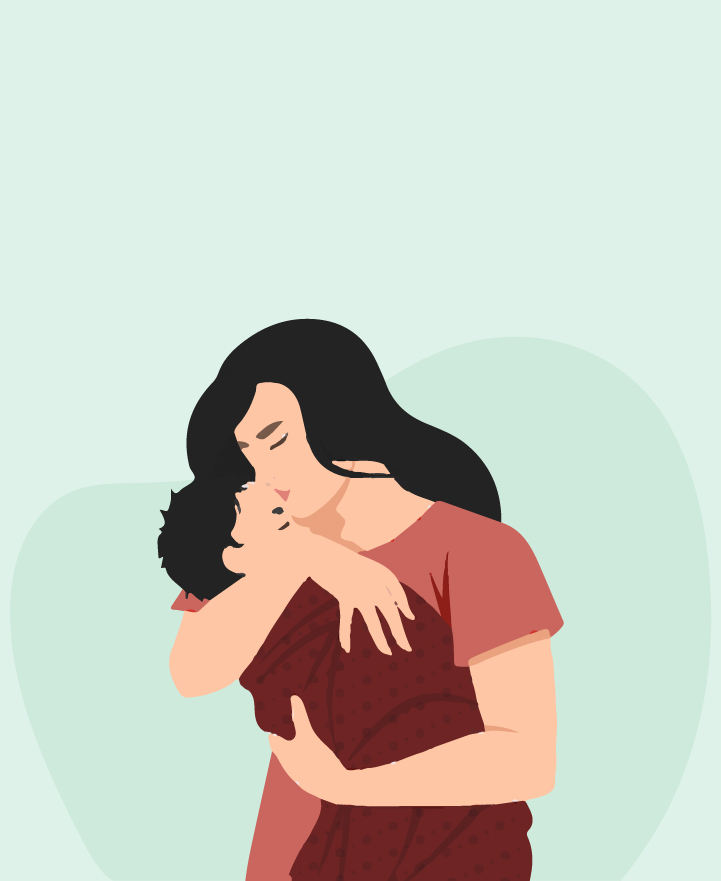

Why Do Babies Have Watery Eyes?
If your baby’s eyes seem constantly teary—even when they’re not crying—you’re not alone in wondering what’s going on. It’s a common concern among new parents, and the answer is often a simple one: the babies tear ducts are still developing. This article walks you through the most common reasons behind watery eyes in babies - from harmless tear duct issues to occasional irritants or mild infections. Read on to understand why this happens and when you might need to pay extra attention.
Reasons Behind Watery Eyes in Babies
In the first few months of life, a baby’s body is still adjusting to the outside world. From feeding to sleeping to digesting - everything is a new experience, including how their tear ducts function.
Here are a few common reasons babies get watery eyes:
1. Underdeveloped Tear Ducts
Most often, watery eyes in babies are due to blocked or underdeveloped tear ducts. These ducts help drain tears from the eye into the nose. In many newborns, the duct is either too narrow or not fully open. This causes tears to well up and overflow, especially when the baby is exposed to wind or light. The good news? In 9 out of 10 cases, this resolves on its own.
2. Exposure to Irritants
Just like adults, babies can be sensitive to smoke, dust, or even strong perfumes. Their eyes may react by producing more tears to flush out the irritants. If watery eyes come and go in certain environments, this could be the culprit.
3. Eye Infections
Sometimes, watery eyes are a sign of an eye infection like conjunctivitis. If the tearing is accompanied by redness, yellowish discharge, or the baby seems to be rubbing their eyes a lot, it’s best to check with a doctor. Early treatment helps and prevents discomfort.
4. Allergies
Though less common in newborns, allergies can also cause watery eyes in older infants. If you notice frequent sneezing, sniffles, or itchy eyes alongside the tears, allergies might be in play.
5. Cold or Flu
When babies catch a cold, their eyes might water more than usual. This is generally temporary and improves as the cold clears up. The key is that your baby should be comfortable and hydrated.
Conclusion
Watery eyes in babies are usually harmless and part of their developmental journey. While it can be a little unsettling to see tears when there’s no crying, it’s often just their tiny tear ducts learning to do their job. However, if the watering is persistent, accompanied by swelling, redness, or discharge, a quick visit to the paediatrician is recommended.
Being proactive with your child's health involves knowing their little changes and quirks. And while you're busy looking after your baby’s well-being, don’t forget to think ahead—securing a reliable health insurance plan for your family can make unexpected medical visits less stressful as it will cover the costs.
One of the important components of our overall wellness is also being financially secured. Healthcare emergencies can happen any time, but a good health insurance policy can protect you from such uncertain situations. To know more about Wellness and other health related tips, visit the wellness corner.
Disclaimer: This blog provides general information and discussions about health and related subjects. The information and other content provided in this blog, website or any linked materials are not intended and should not be considered or used as a substitute for medical advice, diagnosis, or treatment. Kindly contact your doctor before starting a new medicine or health regime.
Related Articles
Squint Eye in Babies- Causes, Symptoms, and Treatment
How to Handle Sleep Regression in Newborns and Infants
Signs of Hearing Problems in Babies
Biliary Atresia - Symptoms, Diagnosis, and Treatment
Published on May 27, 2025

















 Health Insurance
Health Insurance  Travel Insurance
Travel Insurance  Car Insurance
Car Insurance  Cyber Insurance
Cyber Insurance  Critical Illness Insurance
Critical Illness Insurance
 Pet Insurance
Pet Insurance
 Bike/Two Wheeler Insurance
Bike/Two Wheeler Insurance  Home Insurance
Home Insurance  Third Party Vehicle Ins.
Third Party Vehicle Ins.  Tractor Insurance
Tractor Insurance  Goods Carrying Vehicle Ins.
Goods Carrying Vehicle Ins.  Passenger Carrying Vehicle Ins.
Passenger Carrying Vehicle Ins.  Compulsory Personal Accident Insurance
Compulsory Personal Accident Insurance  Travel Insurance
Travel Insurance  Rural
Rural